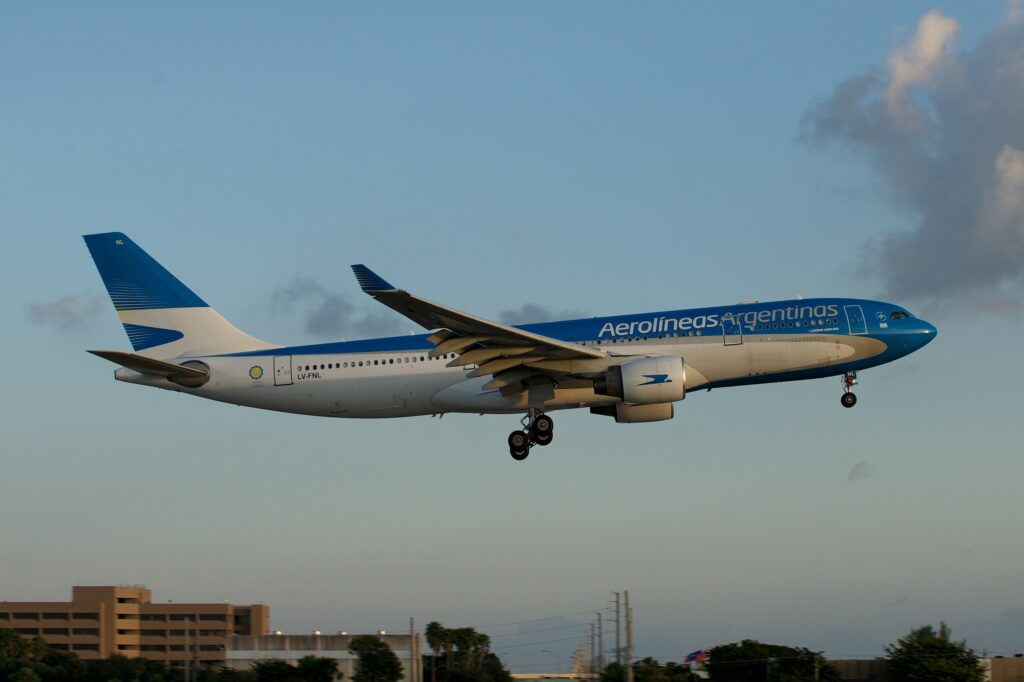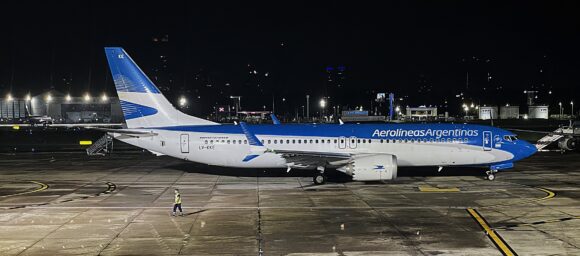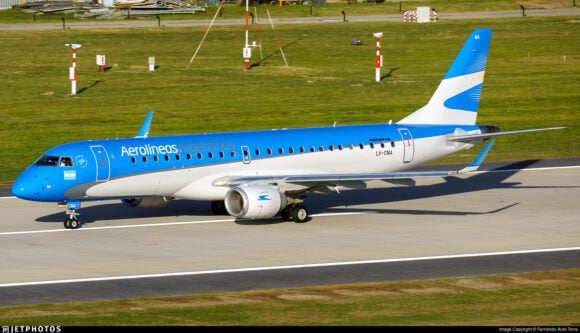
2560px Aerolineas Argentinas Airbus A330 200 LV FNL 15203360984
The 2025 mid-term elections provided the Argentine government with a strengthened political mandate, setting the stage for a final confrontation over its privatization agenda for Aerolíneas Argentinas. For the first time, the legislative numbers to approve a sale are within reach.
But just as the political and legal paths cleared, an unexpected variable scrambled the entire equation: the airline, after decades of chronic deficits, became profitable.
The government’s case was built on a foundation of fiscal necessity, an argument that the airline’s own 2024 balance sheet just invalidated. The 2025 election victory gave the government a powerful narrative, but it did not grant an automatic majority in Congress. The new legislative balance is fractured, making negotiation the only path forward.
The balance of power is held by dialogue-oriented parties. In the 257-seat Chamber of Deputies, LLA (93) and its core ally PRO (14) total 107 votes, 22 short of the 129 needed. The opposition, led by Fuerza Patria (97), is a solid bloc against.
| Political Bloc | Chamber of Deputies (Seats) | Senate (Seats) | Stance on Privatization |
| La Libertad Avanza (LLA) | 93 | 20 | Strongly For |
| Fuerza Patria (UP) | 97 | 28 | Strongly Against |
| PRO | 14 | 7 | For (Key Ally) |
| Unión Cívica Radical (UCR) | 12 | 9 | Divided / Negotiable |
| Provincias Unidas | 17 | 6 | Divided / Negotiable |
| Total Seats | 257 | 72 | |
| Majority Needed | 129 | 37 |
The fate of the legislation rests entirely with blocs like the UCR, open to dialogue, but with a conditional support. They already signaled that their price for cooperation will be a moderation of the government’s maximalist goal, likely forcing compromises like a partial sale or strict operational conditions to maintain vital domestic routes.
While the political math is complex, the legal math is simple. The primary barriers to privatization are gone, thanks to a combination of the government’s current strategy and a critical failure by the previous administration.
The airline’s state-owned status was cemented in 2008 by Law 26.466 (expropriation). The current administration’s Decree 873/2024 bypasses this by reviving Law 23.696, the 1989 State Reform Act. This law defines a two-step process: an executive decree followed by congressional approval. The crucial point is that this requires only a simple majority.
This path is only open because of a pivotal failure in 2023. The then-ruling coalition introduced a bill to “armor-plate” the airline, requiring a two-thirds supermajority for any sale. That bill never passed. Its defeat removed the most significant legal impediment, transforming the challenge from a legal one into a purely political one.
The Profitability Paradox: A Double-Edged Sword
The most profound shift in this debate is economic. The historical justification for privatization—the airline’s status as a chronic fiscal drain—has evaporated.
The Historical Narrative: Since its 2008 renationalization, the airline required cumulative state subsidies estimated between US$7.5 billion and US$8 billion. As recently as fiscal year 2023, it recorded a negative EBIT of US$390 million and received US$136 million in direct subsidies.
The 2024 Turnaround: The 2024 fiscal year results, validated by KPMG, mark a historic reversal.
| Financial Metric | FY 2023 | FY 2024 | Year-over-Year Change |
| Net Income / (Loss) | (ARS 385 billion) | ARS 271 billion | +170% |
| EBIT | (US$ 390 million) | US$ 56.6 million | +114% |
| Operating Result | Negative | US$ 20.2 million (Surplus) | Turnaround |
| Direct State Subsidies | US$ 136 million | US$ 64.2 million | -53% |
| Projected Subsidies | N/A | US$ 0 (for FY 2025) | -100% |
This was the result of aggressive restructuring, including a 13-15% workforce reduction and route optimization. The company formally notified the Ministry of Economy that it will not require any state funds for its 2025 operations.
This success creates a paradox:
- For Proponents: The airline is no longer a liability; it is a highly attractive asset with a 66% domestic market share. The state can now command a high sale price.
- For Opponents: This turnaround directly refutes the premise that state management is inherently inefficient. They can now credibly ask: “Why sell a strategic asset at the exact moment it proved it can be profitable and self-sufficient?”
The debate is no longer about fiscal necessity. It is now purely ideological.
The Future: Ghosts and Models
Every negotiation is shadowed by the ghost of the 1990s privatization, a process remembered for its intense asset stripping, mismanagement, and network contraction. This history is the opposition’s most potent weapon and fuels the dialogist blocs’ demands for safeguards.
This context makes a simple 100% sale politically difficult. The most plausible scenarios now involve hybrid models:
- A partial privatization where the state retains a minority stake or “golden share.”
- A long-term operational concession.
- A full sale bound by strict contractual obligations to maintain unprofitable but socially vital domestic routes.
The 2025 election and the 2023 legal failure made privatization politically possible and legally simple. The airline’s own 2024 profitability, however, made the debate economically and ideologically complex.
Therefore, the government won the political battle but lost its easiest economic argument. The final outcome will not be a swift imposition. It will be a protracted and intricate legislative negotiation. The final law will be a product of compromise, shaped as much by the centrist blocs’ demands and the weight of history as by the administration’s free-market ideology.
Views: 117


